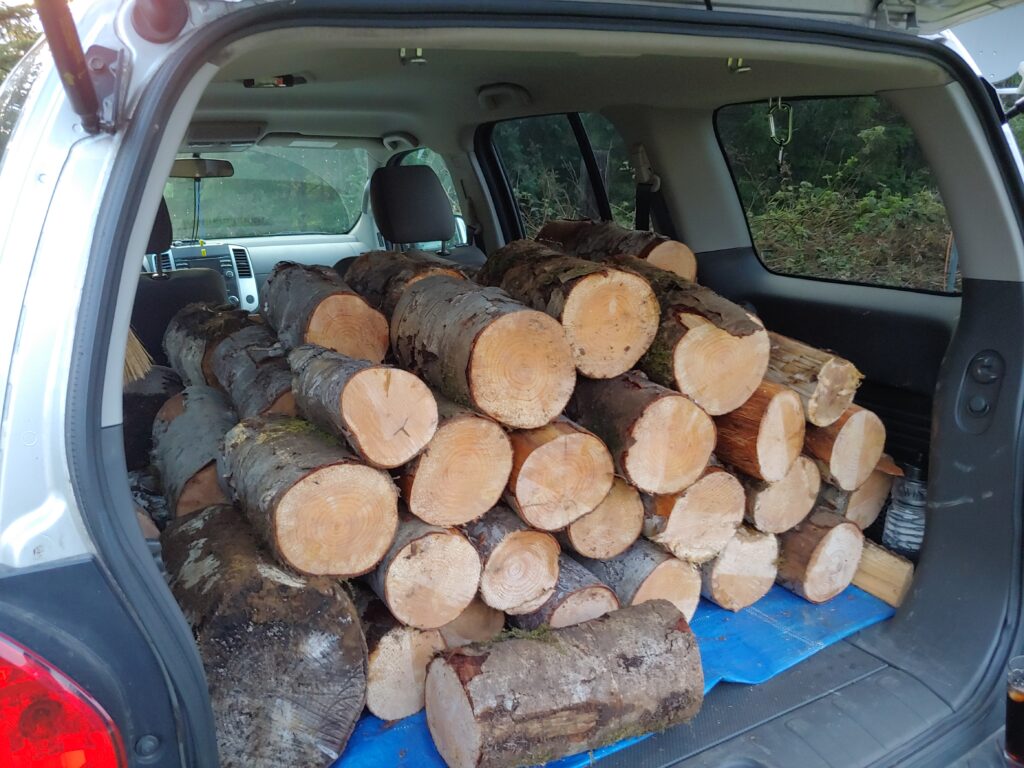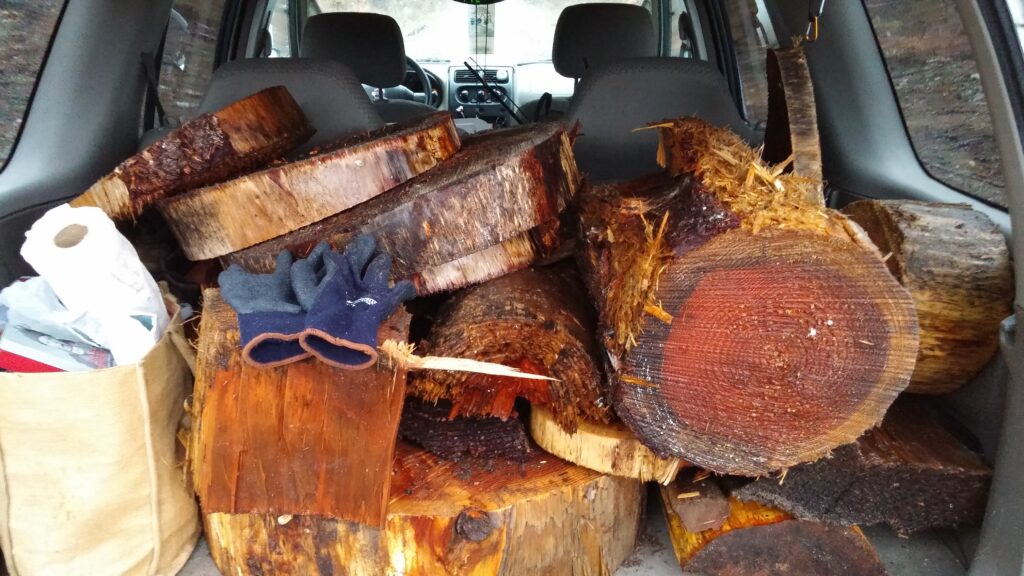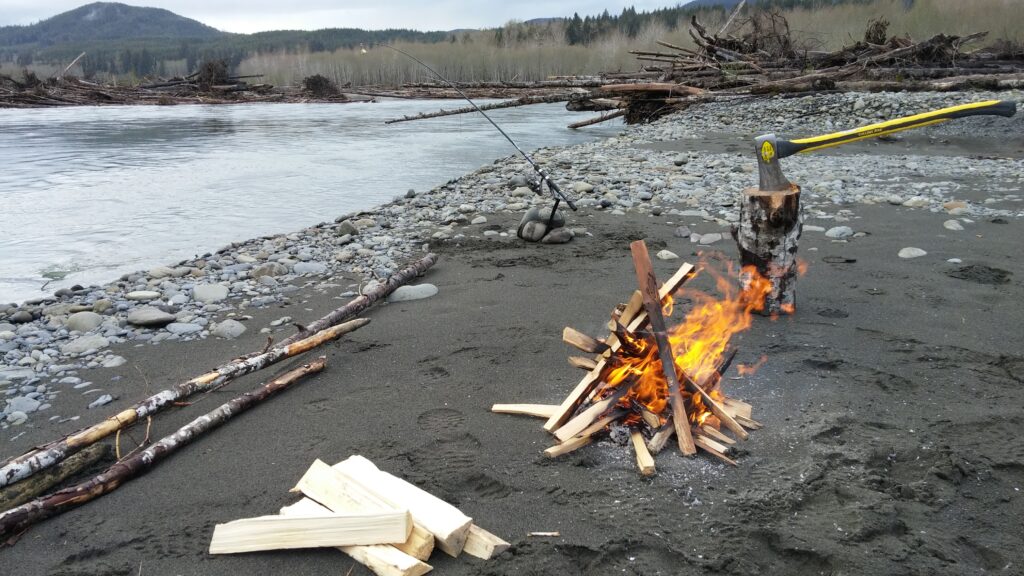DNR FIREWOOD PERMITS

Fueling your outdoor adventure
DNR firewood permits keep the campfires going
By Michael Foster/WDFW
Three generations of hunters enjoy freshly cooked venison at deer camp as the youngest recounts the story of that day’s successful hunt.
A couple lounges on the bank of a salmon stream, catching up after a busy week while watching their side-planer and plunking rigs.
Family and friends of all ages sit down for dinner during a Labor Day camping trip, with the youngest eyeing the s’mores ingredients.
The common thread in these moments? There’s a safely maintained campfire at the center of each picture. It’s the commonality that runs through so many of the near-limitless opportunities for outdoor recreation that we enjoy as Washingtonians.
If you enjoy the outdoor lifestyle, keeping enough wood handy for all those fun outings can sometimes be a challenge.

Enter DNR
The Washington state Department of Natural Resources offers a great resource to help the public answer that need.
DNR firewood cutting permits available in several areas of the state allow people to harvest personal-use firewood for free to the tune of up to six cords per household, per year.
That’s a lot of recreational fires, and if you use wood for home heating, a big savings in your heating budget.
How it works
The permits “provide limited opportunities for the public to cut firewood in approved areas on state trust lands when suitable downed wood is left at timber harvest sites,” according to the permits website.
The permits can be printed from the webpage and have all the rules you need to know (more on that below). The permit must be filled out to be validated and needs to be displayed in your windshield when harvesting or transporting firewood. Also included are maps and driving directions to the harvest site.
DNR asks that you follow your permit carefully for where and what can be cut or collected because snags, downed wood, and stumps can be important parts of wildlife habitat.
Foresters mark the areas open for cutting and collecting dead and down trees for firewood, so you’ll need to follow instructions and stay in the specified area.
The permits are generally put online from fall into winter and expire as early as mid-winter or as late as March or April.
While these permits are not available for all locations in the state, two of DNR’s six state regions had permits open as of this writing.
Depending on availability, the DNR Northwest, Olympic, Southeast, and South Puget Sound regions display cutting areas and permits on the permits webpage.
For wood cutting opportunities in other regions, people can contact the appropriate region office for instructions through links at the webpage.


One size fits all
These permits offer an opportunity for the public to stock up on a resource according to their needs.
If you’re going out to try to put a dent in your home-heating costs, then sure, you’re going to want a chainsaw.
If you’re trying to fuel your camps for a season of fishing or hunting, you might also want that chainsaw, and a modest homeowner’s edition can do the trick.
For those interested in just a few casual recreational campfires, it is still possible to go out to these sites with no saw and no investment and get what you need by simply picking up leftovers from chainsaw harvesters and butt-cuts from loggers, depending on availability. If you want to throw some more exercise in, bring a bowsaw to add a few smaller rounds to the scraps you can pick up by hand.
And of course, all parties will still want at least an ax for splitting rounds. Those getting more serious about this might want to add a maul, splitting wedges, or even a log splitter to their repertoire.
That all said, DNR stresses that it cannot guarantee the quantity or quality of firewood available in these harvest areas, and the burning of slash-pile burns might remove some of the stock. Nonetheless, it’s not unheard of to go out in the last days of a permit and get a load of scraps for backyard burns.
As with any outdoor excursion, be mindful of road and weather conditions. Some of these areas can be near well-maintained, maybe even paved, forest roads, while others are on remote rough roads. The ground in a clear-cut can be uneven, strewn with branches, and tough to navigate, making a first-aid kit a good idea for the excursion, especially if you’re adding a saw into the mix.
By the book
Here’s a rundown of some of the rules involved in personal firewood harvest on DNR permits. For complete information and regulations, refer to the individual permit you’re using and the permits webpage.
- A maximum of six chords of firewood per household per calendar year is allowed from DNR lands despite the number of permits one pulls.
- No cutting live trees, standing snags, or trees with paint on them; only dead and downed wood.
- Harvested firewood is for personal use only; no trade or sale.
- Don’t disturb planted seedlings.
- There are special rules during fire season, April 15 to Oct. 15, on fire precaution levels, chainsaw use, smoking, having a fire extinguisher and shovel, and holding a fire watch.
- Harvesters are asked to observe social distancing guidelines.
- A Discover Pass is required to access DNR-managed recreation lands. For more information or to purchase the pass, visit wdfw.wa.gov/licenses/parking.
While you’re at it
Another advantage of using these permits is that they can help introduce you to new areas for a variety of other outdoor activities.
Making your way to firewood harvest areas is a good way to get out and explore new roads and territory for hunting, hiking, mushroom and berry foraging, and camping.
After firewood harvest is over, these areas and their surroundings can be promising habitat for forest grouse, mushrooms, and big game species.
So getting out there to use these permits can keep your upcoming outdoor adventures fueled at the same time as giving you inspiration for the outings to come.



